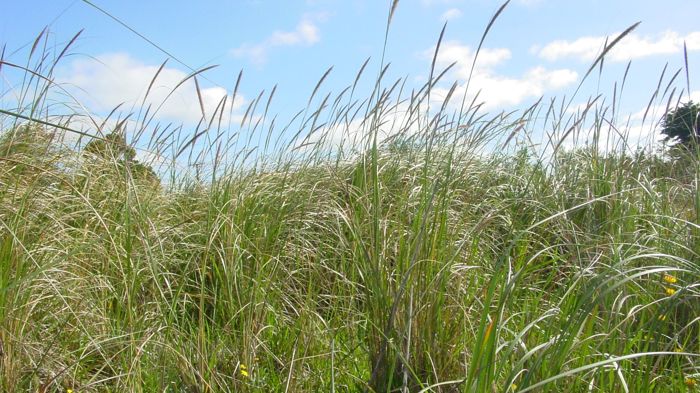African feather grass


African feather grass
Notify council
What does it look like?
African feather grass is a perennial grass that forms large clumps up to two metres tall. From November to April, it produces long, thin flower heads with distinctive yellow to purple flower and prominent bristles. When ripe, the spikelets containing the seed fall away, leaving the bare stem. The shape of the flower head distinguishes it from the fluffy flower heads of pampas grass and toe toe. African feather grass has been found in pasture, roadsides, urban areas, wasteland, swamps and stream banks.
Why is it a problem?
African feather grass can suppress low growing plants and restrict movement of animals, people and machinery. It impairs drainage and visibility along roads, creates a fire hazard and provides cover for pest species. African feather grass is very persistent (recovers quickly after being damaged), difficult to eradicate and is drought-resistant. The seeds of African feather grass are dispersed by wind, water and in animal hair or clothing (barbed bristles on the seed husk enable them to become entangled in fibres). Rhizomes are spread by machinery/cultivation or by dumping plant material/soil.
Control methods
Physical control
- Dig out small infestations. Dispose of at refuse transfer station or burn.
Herbicide control
- Spray (spring-autumn): glyphosate 15-20ml per litre water + penetrant (360g/l glyphosate)
- Slash and spray regrowth (spring-autumn): haloxyfop-P-methyl 15ml per litre water (96.8g/l Haloxyfop).
CAUTION: When using any herbicide or pesticide, PLEASE READ THE LABEL THOROUGHLY to ensure all instructions and safety requirements are followed.
Related information
Management programme
National Pest Plant Accord (NPPA)
Progressive containment
Rules
What is council doing about this?
More images


